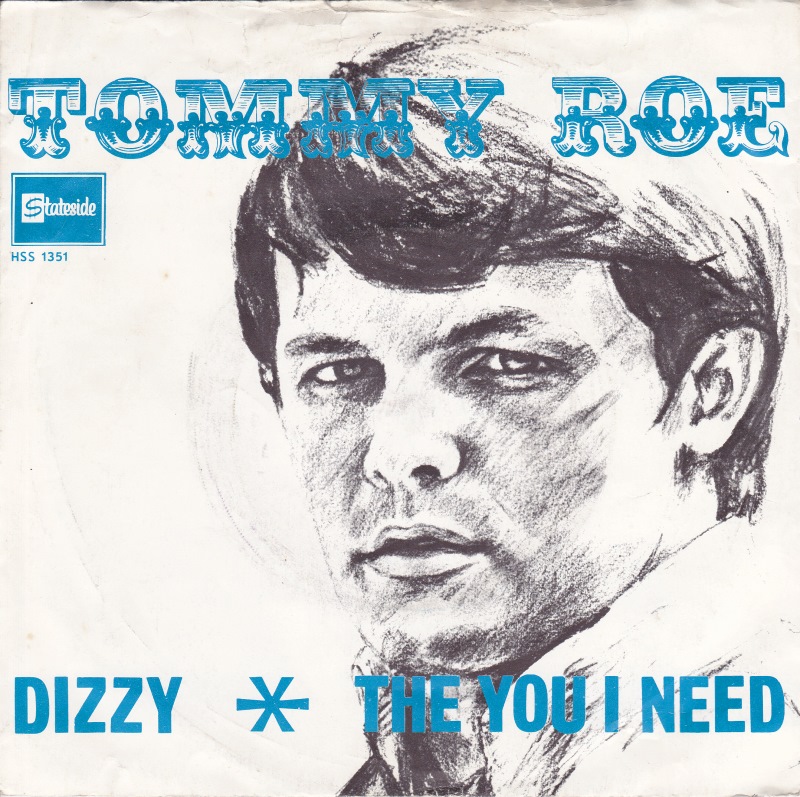March 15, 1969
- STAYED AT #1:4 Weeks
In The Number Ones, I'm reviewing every single #1 single in the history of the Billboard Hot 100, starting with the chart's beginning, in 1958, and working my way up into the present.
In 1962, a 20-year-old Atlanta electrician named Tommy Roe hit #1 with "Sheila," a direct Buddy Holly bite that's both good and weird enough to stand on its own. Roe, who'd written "Sheila" when he was 14, didn't think he had a music career in him, and the bosses at RCA had to advance Roe thousands of dollars to convince him to leave his job at General Electric and go out on tour.
In the years that followed, though, Tommy Roe cranked out a whole lot of simple, joyous, and delightful pop hits, proving himself to be a pro. (The delightfully cruel "Hooray For Hazel," which peaked at #6 in 1966, is my favorite of them; I might go as high as a 9 on that one.) Near the end of the '60s, Roe attached himself to the nascent bubblegum movement, though he'd basically already been making bubblegum pop for his entire career. Then, in 1969, Roe hit #1 once again, becoming one of the handful of artists to reach the top of the charts both before and after the Beatles' arrival. That's a hell of a run, and it's bookended by two extremely fun songs.
"Dizzy," Tommy Roe's second and final #1 hit, has a great beat, a funky tumbling thing from resident Wrecking Crew drummer Hal Blaine. It also has a string section doing what amounds to a slow-motion version of Bernard Herrmann's stabs from the Psycho score. Beyond that, "Dizzy" ultimately isn't that different a song from "Sheila." It's a naïve, openhearted lovestruck jam, and it matches its feather-light subject matter with some seriously sharp and canny hooks. It's the work of a pop-music craftsman who knows what he's doing.
Roe wrote "Dizzy" with Freddy Weller, an old Atlanta buddy who'd been working as the guitarist for Paul Revere & The Raiders and who was in the process of remaking himself as a country singer. The song apparently has 11 key changes, which is both ridiculous and hilarious. And those streamlined bits of musical disorientation are there to drive home the point of the song. Tommy Roe has seen this girl, and he can't stop thinking of her, and he doesn't know what to do about it. He's dizzy. Then, in the second verse, he tells her how she feels, and she kisses him. And then he only gets dizzier. The drums and strings and guitars pound away in a weirdly circular sense, effectively mirroring the idea that this kid just can't get his feet under him. He sounds lost and desperate, but in a polite and friendly and approachable way.
"Dizzy" is about as nonthreatening as a song about romantic obsession can possibly be. And that's what makes it perfect for the bubblegum moment. This was the period where craftsmen like Roe were using all their pop instincts and chops -- all the tricks they'd picked up making garage rock or (in Roe's case) biting Buddy Holly -- and put them in the service of silly, happy songs about love. Roe and his bubblegum peers never cared the slightest bit about credibility. They just wanted to deliver kicks. And in a song like "Dizzy," a best-case scenario for a low-ambition bubblegum bop, that's exactly what they did.
GRADE: 8/10
BONUS BEATS: Here's De La Soul's "The Magic Number (1 2 3 Mix)," from 1989, which producer Prince Paul built on a sample of "Dizzy":
https://youtube.com/watch?v=62Tsc5qTa3A
BONUS BONUS BEATS: Here's comedian Vic Reeves teaming up with college-rock band the Wonder Stuff for a fired-up "Dizzy" cover that hit #1 in the UK in 1991:






